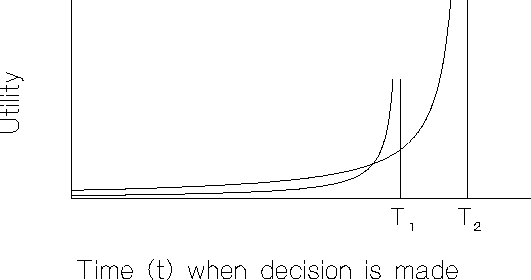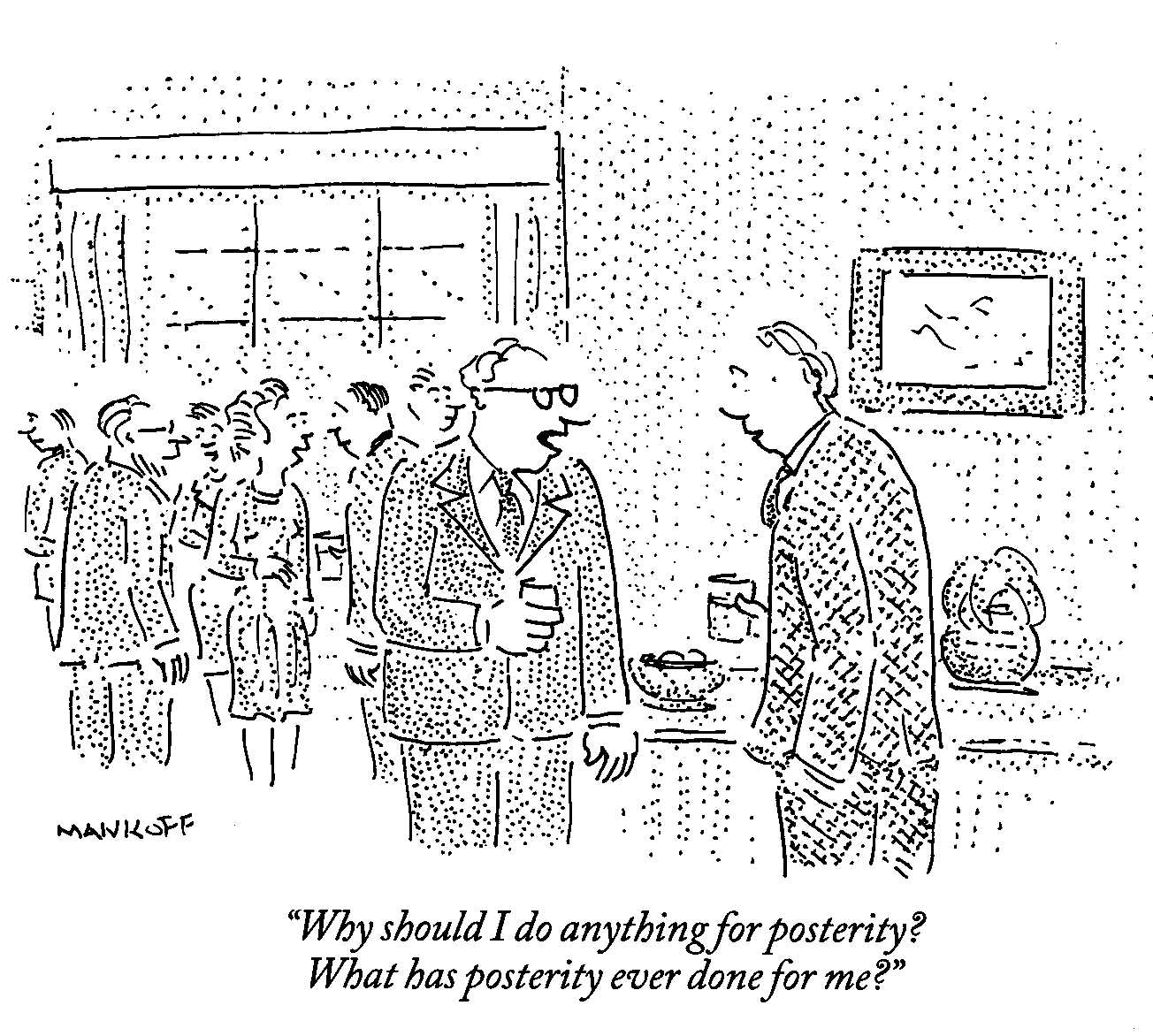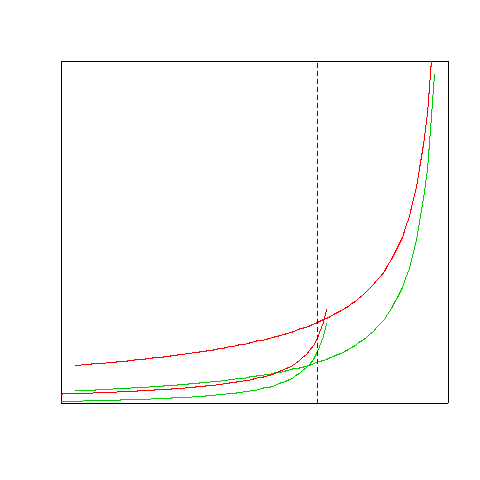Normative theory: exponential discounting

u(t) = U0e-βt, or, if U0=1, r(t) = e-βt
Note: this is about decision utility.
Expected-utility: uncertain states
Multi-attribute: attributes, criteria, goals
Utilitarianism: people
Intertemporal choice: times
health behaviors (eating, exercise, smoking, etc.)
other preventive medicine (moles, exams)
addiction
(under)saving - individuals and governments
lack of planning (asteriods, global warming)

u(t) = U0e-βt, or, if U0=1, r(t) = e-βt
Note: this is about decision utility.
Risk
Interest - everybody else does it
Pure time preference
Increasing standard of living
Changes in values (identity)
A. Save a life now, at T0, for $100.
B. Invest the money. Wait until it doubles at time T1. Save 2 lives for $200. (Assume no change in cost of lifesaving.)
C. At T1, invest the money, wait until T2, then save 4 lives.
Oops.
If we discount the lives at the rate of interest, this won't
happen.
Thus, (1 life at T0) == (2 lives at T1) == (4 lives at T2).

u(t) = a/d(t+c)
| A. one candy now vs. 3 in 24 hours. |
| B. one candy in 24 hours vs. 3 in 48 hours. |
| Same choice made at different times. |


| future | assimilation | + | certain | savoring |
| future | assimilation | + | uncert. | hope |
| future | assimilation | - | certain | dread |
| future | assimilation | - | uncert. | fear |
| future | contrast | + | certain | impatience |
| future | contrast | + | uncert. | fear? |
| future | contrast | - | certain | ? |
| future | contrast | - | uncert. | ? |
| past | assimilation | + | certain | savoring |
| past | assimilation | - | certain | horror? |
| past | contrast | + | certain | missing |
| past | contrast | - | certain | relief |
+ and - refer to the event, not the emotion
A. dinner at a fancy French restaurant on Friday in 1 month vs.
B. dinner at the French restaurant on Friday in 2 months
A. dinner at the French restaurant on Friday in 1 month and
dinner at a local Greek restaurant on Friday in 2 months, vs.
B. dinner at the French restaurant on Friday in 2 months and
dinner at a local Greek restaurant on Friday in 1 month
A. dinner at the French restaurant on Friday in 1 month
and dinner at home on Friday in 2 months
B. dinner at the French restaurant on Friday in 2 months
dinner at home on Friday in 1 months
Subjects were asked when they would use two $100 coupons to their favorite restaurants.
The 2-year group preferred longer delays than either of the other groups. They wanted to spread out the dinners over the whole interval. Of course, the first group had an even longer interval, but it was not brought to their attention.
Subjects were asked when they would use two $100 coupons to their favorite restaurants.
The 2-year group preferred longer delays than either of the other groups. They wanted to spread out the dinners over the whole interval. Of course, the first group had an even longer interval, but it was not brought to their attention.
Subjects were asked when they would use two $100 coupons to their favorite restaurants.
The 2-year group preferred longer delays than either of the other groups. They wanted to spread out the dinners over the whole interval. Of course, the first group had an even longer interval, but it was not brought to their attention.
Subjects were asked when they would use two $100 coupons to their favorite restaurants.
The 2-year group preferred longer delays than either of the other groups. They wanted to spread out the dinners over the whole interval. Of course, the first group had an even longer interval, but it was not brought to their attention.